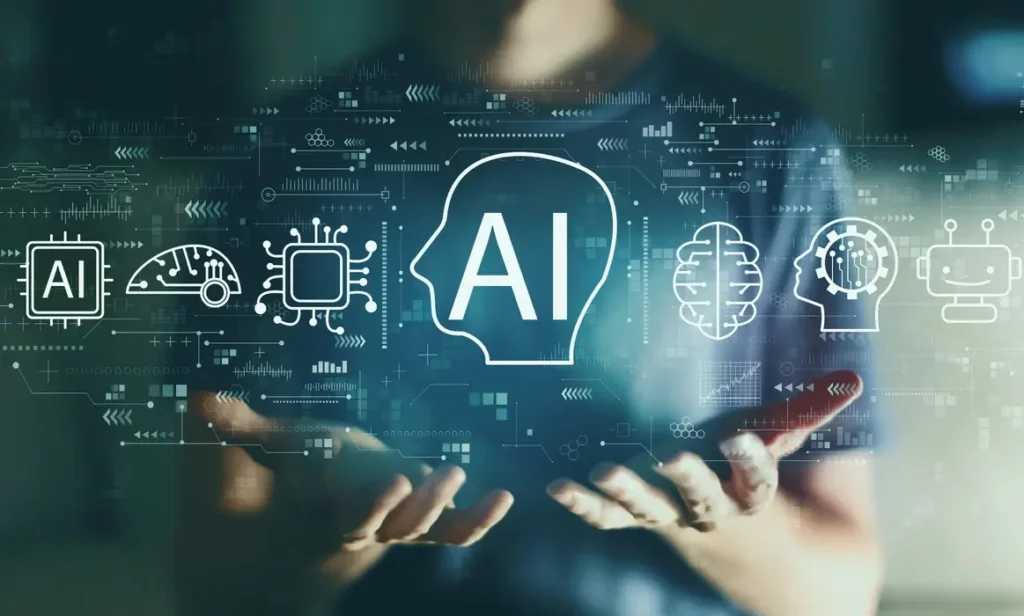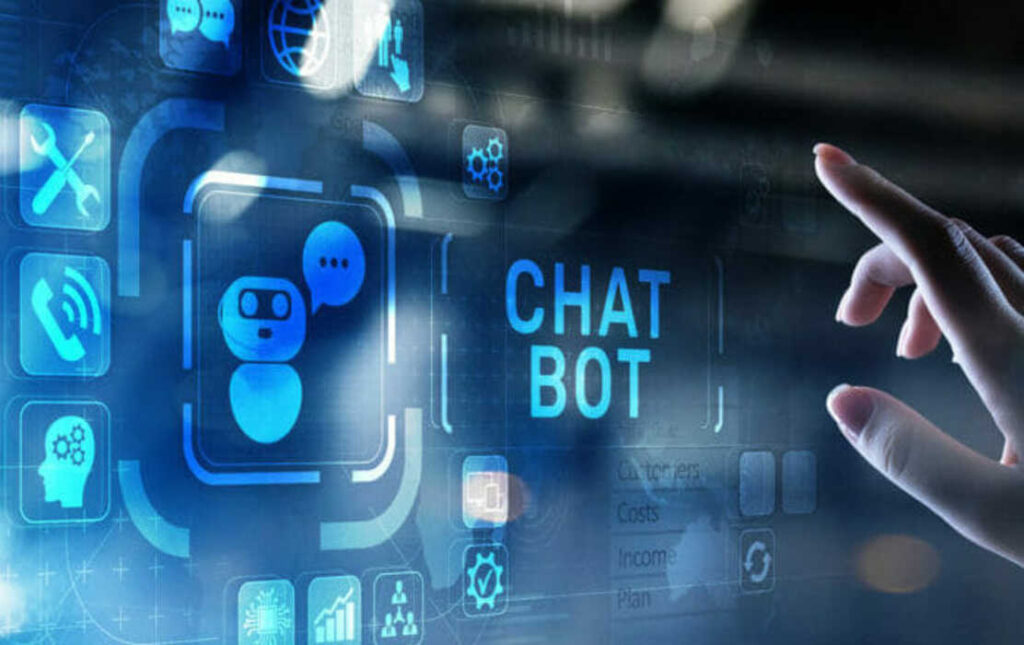AI chatbots have become ubiquitous in our digital lives, revolutionizing the way businesses interact with their customers. Whether you’re ordering a coffee, booking a train ticket, or asking about a product online, there’s a high chance you’ve interacted with a chatbot. But how do they actually work? What purpose do they serve, and what impact do they have in the professional world? This article delves into these questions to provide a comprehensive and accessible overview of AI chatbots.
What is a Chatbot?
At its most basic level, a chatbot is a computer program designed to simulate human conversation. The term “chatbot” is derived from the combination of “chat” (conversation) and “bot” (robot). Chatbots can range from simple programs that respond to specific queries with pre-recorded answers to sophisticated virtual assistants capable of learning and adapting to users through artificial intelligence (AI) and machine learning.
Modern chatbots often use Natural Language Processing (NLP) technology to analyze and understand user queries more deeply. NLP allows chatbots to grasp the nuances of human language, deduce the intent behind a question, and formulate appropriate responses. Additionally, AI-based chatbots can continuously improve their performance through machine learning, analyzing past interactions to refine their algorithms and provide increasingly relevant answers.
How Chatbots Work
Chatbots operate using various technologies, including automated rules, natural language processing, and machine learning. There are primarily two types of chatbots:
- Task-Oriented (Declarative) Chatbots are single-purpose programs that focus on executing a function. Using rules (such as decision trees), they generate automated yet conversational responses to user requests. Interactions with these chatbots are highly specific and structured, making them best suited for support and service functions, like a robust and interactive FAQ. Task-oriented chatbots can handle common queries, such as questions about business hours or simple transactions that don’t involve a wide range of variables. These basic functionalities make them the most commonly used chatbots today.
- Predictive (Conversational) and Data-Driven Chatbots are often referred to as virtual assistants or digital assistants. They are much more sophisticated, interactive, and personalized than task-oriented chatbots. These chatbots are context-sensitive and leverage natural language understanding, machine learning, and AI to learn over time. They apply predictive intelligence and analytics to enable personalization based on user profiles and behavior. Digital assistants can learn a user’s preferences over time, make recommendations, and even anticipate their needs. Besides monitoring data and intentions, they can initiate conversations.

Business Utility and Impact
Chatbots enhance operational efficiency and allow businesses to save costs while offering convenient and additional services to both employees and customers. They enable companies to easily resolve various types of customer inquiries and issues while reducing the need for human interaction.
With chatbots, a business can scale, personalize, and be proactive simultaneously, which is a significant differentiator. For instance, when a company relies solely on human power, it can only serve a limited number of people at a time. To remain profitable, companies are forced to focus on standardized models, limiting their capacity for personalized distribution.
In contrast, chatbots allow businesses to build personal relationships with an unlimited number of customers and can be scaled up or down based on demand and business needs. By using chatbots, a company can provide proactive, personalized, and human-like service to millions of people.
Here’s a detailed look at the main uses of chatbots:
1. Enhancing Customer Experience
- 24/7 Availability: Chatbots are always available, providing immediate responses to customer inquiries.
- Reduced Wait Times: They can handle numerous requests simultaneously, reducing user wait times.
- Multilingual Support: Chatbots can be programmed to understand and respond in multiple languages, essential for international businesses.
- Real-Time Tracking: Customers can receive instant updates on their orders or reservations.
Orange, one of the leading telecommunications companies in France, deployed a chatbot called “Djingo” to enhance its online customer service. Thanks to this conversational AI, Orange was able to significantly reduce wait times, increase customer satisfaction by over 30%, and lighten the workload of its human agents.
2. Automating Repetitive Tasks
- Routine Tasks: Chatbots can automate tasks such as scheduling appointments, tracking orders, and managing FAQs.
- Time Savings: Employees can focus on higher-value tasks.
- Transaction Processing: Chatbots can handle simple transactions like booking tickets or paying bills.
- Human Resources Management: Automating HR processes such as sorting applications, scheduling interviews, and onboarding new employees.
Another notable example is SNCF, which integrated a chatbot to assist customers with finding train schedules, booking tickets, and managing cancellations or modifications. This chatbot not only enhanced the user experience by providing 24/7 support but also streamlined customer service by speeding up response times, particularly during peak periods.
3. Personalization and Engagement
- Personalized Interactions: Thanks to AI, chatbots can offer personalized responses based on user preferences and behavior.
- Data Collection: Interactions with chatbots provide valuable data that can be used to refine marketing strategies and better target customers.
- Product Recommendations: Chatbots can suggest products or services based on previous purchases or declared user preferences.
A successful example in this field is Decathlon, the French sports retail giant. Faced with a massive increase in customer inquiries in recent years, Decathlon integrated an AI-based digital assistant called Heyday. This chatbot has managed to autonomously handle over 65% of customer queries while maintaining a high level of customer satisfaction. Decathlon’s digital assistant can understand more than 1,000 unique customer intents, allowing it to provide personalized and accurate responses and adapt to users’ needs.
4. Support and Assistance
- Technical Support: Chatbots can help solve common technical problems without human intervention.
- Access to Information: Provide instant and accurate information on products, services, or company policies.
- Navigation Assistance: Chatbots can guide users through websites or apps, improving accessibility and user experience.
The well-known hotel chain GrandStay Hotels is a great example of the utility of AI chatbots in this domain. The company implemented a chatbot capable of handling room reservations, cancellations, and even responding to more specific questions, such as the availability of a gym or opening hours.
The results were impressive: 72% of inquiries were handled without human intervention, allowing the hotel to reduce the average call handling time by 28% and decrease customer service costs by $2.1 million per year. Additionally, customer satisfaction scores increased by 22%!
5. Marketing and Sales
- Lead Generation: Chatbots can qualify leads by asking relevant questions and collecting contact information.
- Customer Engagement: Chatbots can interact with customers in an engaging way on websites and social media, increasing conversion rates.
- Data Analysis: Chatbots collect data on customer preferences and behaviors, allowing for better personalization of offers.
Let’s take the example of Luxury Escapes, a travel booking platform. Luxury Escapes launched a chatbot designed to help users find and book personalized trips. This chatbot not only enhanced user engagement through interactive features but also led to a significant increase in conversions.
Within 90 days of its launch, the Luxury Escapes chatbot generated over $300,000 in sales, with a conversion rate three times higher than that of the traditional website. The bot also interacted with more than 6,200 travelers in its first three months, maintaining an 89% response rate to follow-up messages.

Challenges and Limitations of Chatbots
Despite advances in artificial intelligence, chatbots can sometimes struggle to understand complex requests or those phrased in uncommon natural language. In such cases, the impact on user experience can be negative. When a chatbot misinterprets a request, it can lead to misunderstandings, potentially causing user frustration.
It is also important to understand that in certain situations, customers prefer human contact. This is often the case when contacting customer service for advanced technical problems with a product or service.
Businesses must find the right balance between automation and human intervention to maintain a high-quality customer relationship. As such, chatbots should be able to redirect customers to human customer service when a request exceeds their capabilities.
The Future of Chatbots
Where is the evolution of chatbots heading? Like other AI tools, chatbots will be used to further enhance human capabilities, freeing people to be more creative and innovative, dedicating more time to strategic rather than tactical activities.
In the near future, businesses, employees, and consumers will likely benefit from improved functionalities such as faster recommendations and forecasts or access to high-definition video conferencing directly from a conversation. These and other possibilities are under study and will evolve rapidly as AI, natural language processing, and machine learning advance.
Today, everyone can have a fully functional personal assistant in their pocket, making our world a more efficient and connected place to live and work. However, for this technology to reach its full potential, continued investment in rigorous and ethical research is essential, ensuring data protection, security, and algorithm transparency.




